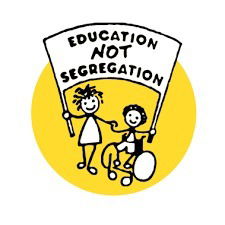Setting the Right Path: Walla Walla High School in Washington State Drops the Practice of Tracking Students

Tracking or “ability grouping” are common practices in schools across the country despite research that shows these practices contribute huge opportunity gaps. Educators at Walla Walla High School in Washington State decided it was time for a change.
What Is Tracking?
A decade of research has established that the tracking of students creates a serious issue with Equity and Equality in the United States, yet it is still practiced in school districts across the nation. Students are sorted into gifted and talented programs, honors classes or guided onto AP tracks not afforded to all students.
In the practice of “tracking” schools sort students into different classes or sets of classes (ability tracking), often with differentiated curriculum. Decisions about which students end up on which track is often based on progress reports, teacher observation reports, and state standardized tests. It would not be unusual for this practice to be in use as early as kindergarten, where screenings sort students into different classes. By the time they’re juniors in high school, students’ access to dual enrollment opportunities or college-prep courses may be pre-determined by whether they have taken advanced classes and maintained a certain grade average.
On paper tracking may not seem so bad. It appears to allow teachers to spend more time, attention and resources to students who need help.
Maureen T. Hallinan a professor of sociology and the Director of the Center for Research on Educational Opportunity at the University of Notre Dame explains:
The de-tracking movement has challenged widely held beliefs regarding the notion of “ability” and the role it plays in determining the kind of curriculum to which students will be exposed. More educators are now convinced that nearly all students are capable of mastering a challenging curriculum. New academic standards, state tests, and accountability requirements represent an effort to ensure that all students are given access to a rigorous curriculum. De-tracking may never become widespread, but changes such as these are expected to improve the achievement of all students, particularly those who are ill served by the negative aspects of tracking as it is currently practiced.
While the de-tracking movement has had an impact on school reform, most schools still assign students based on ability. However, the movement has increased the public’s awareness of the inadequate resources and curriculum provided to students in the “low-track” classes.
The Benefits of the Inclusive Classroom Model at Walla Walla High School
In the beginning the school faced some push back from teachers and parents alike. Some parents felt that their student may need to be placed in a tracked class so that they could be successful and make meaningful academic progress. While some educators felt that the tracking system wasn’t broken and did not need to be redesigned or fixed.
The school launched an educational platform to explain the research behind the push to de-track students and provided multiple professional development opportunities for teachers, staff, and parents to participate in.
While there are still a few who appose de-tracking, at Walla Walla High School, things have changed. Now, any student can sign up for an AP class or be assigned by a teacher to attend a shortened class period during the school day to receive additional content support or enrichment activities.
Teachers have expressed that a more diverse range of students each day strengthens their teaching and social understanding. School counselor, Michelle Higgins says that de-tracking has made students feel more supported and more likely to take academic risks.
General education teachers and special education teachers alike are recognizing the benefits of inclusive education practices. This approach to learning creates learning environments that are equitable and nurturing for every student. Inclusive learning provides students with access to flexible learning choices and effective paths for achieving educational goals in spaces where they experience a sense of belonging and access to grade level curriculum. In this environment, all children, regardless of ability level learn together in the same classroom. Inclusive practices are based on the understanding that all children are valued equally and deserve access to the same educational opportunities.


